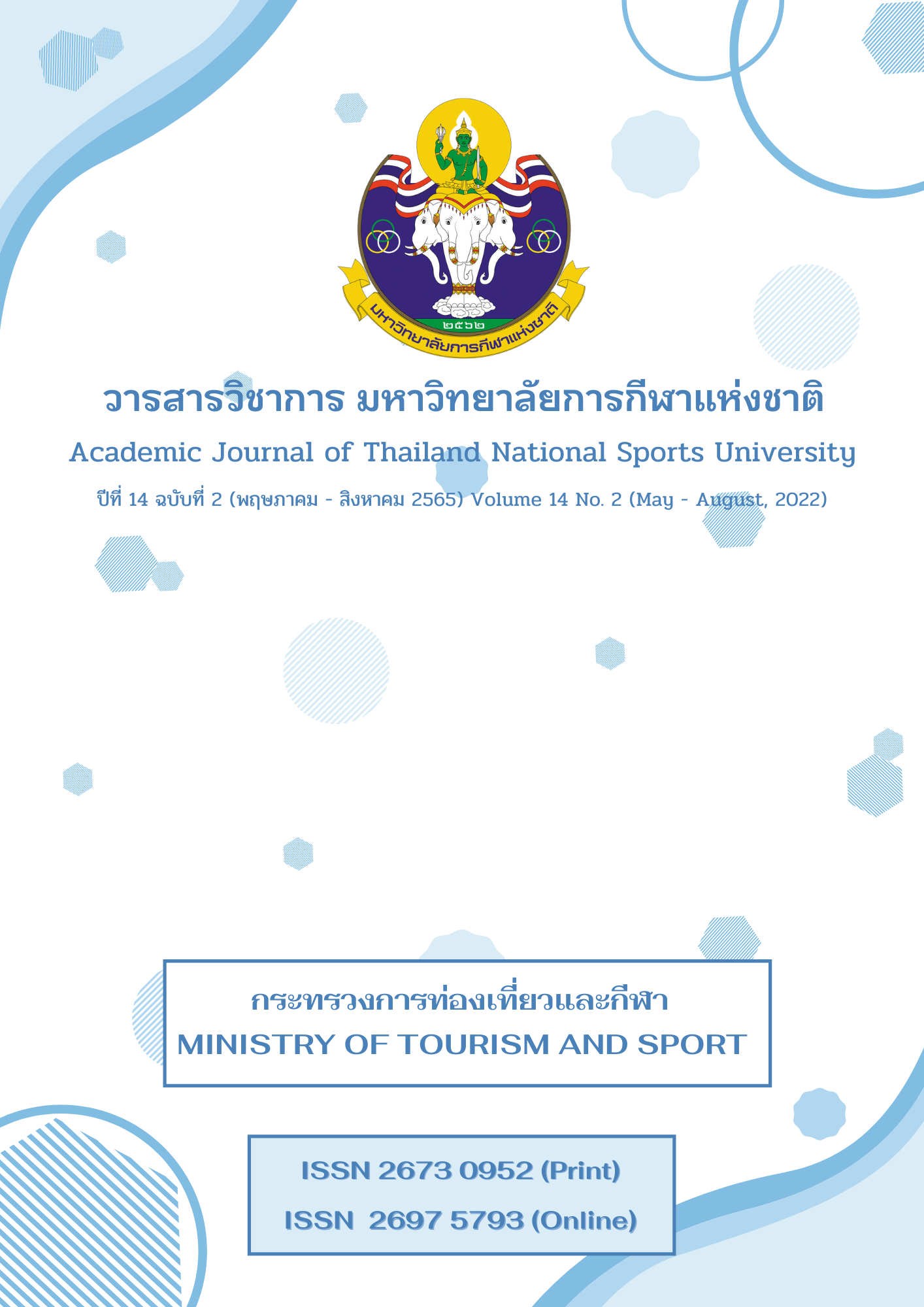DEVELOPMENT GUIDELINES OF TOURISM DESTINATION POTENTIALS IN SI SA KET PROVINCE
Main Article Content
Abstract
The purposes of this research were to study the tourists and people’s needs for a potential development of tourism destination in Si Sa Ket Province and to offer the development guidelines of tourism destination potentials in Si Sa Ket Province. The samples were divided into 3 groups; namely, Thai visitors, local people, and government officers who were related to the tourism in Si Sa Ket Province. The sample size of tourists and people was derived from applying Yamane’s sample size table which received 400 people per group. They were selected by using quota sampling which consisted of 200 people per group from 5 selected districts. The quota sampling included 40 people from each district equally. Both sample groups were gained by accidental sampling while those who were 6 government officers were acquired by purposive sampling. The research instruments comprised two questionnaires; namely, 1) the questionnaire for tourists with Index of Item Objective Congruence value of 0.90, 2) the questionnaire for local people with Index of Item Objective Congruence value of 0.88, and the semi-structured interview for government officers with Index of Item Objective Congruence value of 0.96. For data analysis, percentage, mean, standard deviation were utilized. Data analysis results were presented in the form of table with essay. And the data derived from the interview was analyzed in terms of contents and summarized in line with the main points of the interview as well as presented in essay.
The results of this study were revealed that tourists and people’s needs for the potential development of tourism destination in Si Sa Ket Province which comprised 6 different aspects; namely, the Attraction, the Accessibilities, the Amenities, the Available Packages, the Activities, and the Ancillary Service had means value overall at a high level. As for the development guidelines of tourism destination potentials in Si Sa Ket Province were concluded that the responsible sectors should organize a development plan and set a policy on tourism distinctly as well as develop the tourism destination for achieving concretely sustainable tourism in keeping with the potential of each area according to the tourists and people’s needs.
Article Details

This work is licensed under a Creative Commons Attribution-NonCommercial-NoDerivatives 4.0 International License.
The published article is a copyright of the Academic Journal of Thailand National Sports University. The passage appeared in each article in this academic journal is a perspective of each author which is not related to the journal. Each author is required to be responsible for all components of his/her own article. If there are any mistakes, each author must be responsible for those mistakes on his/her own.
References
Boonchom Srisa - ard. (2000). Statistical Methods for Research Workers. Bangkok: Sureeriyasart.
Boonlert Jittangwattana. (2005). Development of Sustainable Tourism. Bangkok: Press and Design.
Boonlert Jittangwattana. (2006). Development and Conservation of Tourist Attractions. Bangkok: Press and Design.
Boonlert Jittangwattana. (2013). Tourism Industry (2nd ed.). Bangkok: Dharmasarn.
Buhalis, D. (2000). Marketing the competitive destination of the future. Journal Tourism Management, Special Issue: The competitive destination.
Chi, C., & Qu, H. (2008). Examining the structural relationships of destination image, tourist Satisfaction and destination loyalty: An integrated approach. Journal Tourism Management, 29, 624 - 636.
Goeldner, Charles R., & Ritchie, J. R. Brent. (2009). Tourism: Principles, Practices, Philosophies (11th ed.). New York: John Wiley & Sons.
Kaiser, C.; Jr.; & Heber, Larry E. (1978). Tourism Planning and Development. Boston: CBI.
Manassinee Boonmeesrisanga. (2013). Brand identity creation for tourist attractions of Amphoe Hua Hin in Prachuap Khiri Khan in view of adolescent tourists. Veridian E - Journal Silpakorn University, 6(1), 548 - 560.
Ministry of Tourism and Sports. (2017). The Second National Tourism Development Plan (2017 - 2021). Retrieved from https://www.mots.go.th/
Ministry of Tourism and Sports. (2019). Tourists Statistics in Si Sa ket. Retrieved from https://www.mots.go.th/News-link.php?nid=13039
Nisa Chatkul. (2012). Tourism Industry (4th ed.). Bangkok: Chulalongkorn University Printing House.
Si Sa Ket Statistical Office. (2020). Area Population Statistics in Si Sa Ket. Si Sa Ket: Si Sa Ket Statistical Office.
Sirinan Pongnirundorn, Ochanya Buatham, & Chatchaya Yodsuwan. (2016). Guidelines for effective development in tourism management of Wang Nam Khiao District, Nakhon Ratchasima Province. College of Graduate Study in Management Khon Kaen University Journal, 9(1), 234 - 259.
Suriyun Suvunracs. (2010). Area - based tour package of participatory learning Tankdaeng History, Thamot District, Phatthalung Province. Suthiparithat Journal, 24(73), 57 - 72.
Vipa Srirathu. (2008). Eco - tourism potential of Amphoe Khao Kho, Phetchabun Province (Master’s thesis), Srinakharinwirot University.
Wanna Wongwanich. (2003). Tourism Geography (2nd ed.). Bangkok: Thammasat University.
Yamane, T. (1967). Statistics: An Introductory Analysis. New York: Harper and Row.


